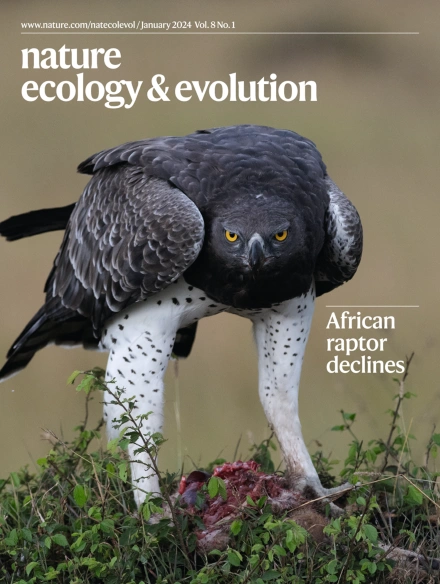黄热病蚊子自驯化的基因适应
IF 13.9
1区 生物学
Q1 ECOLOGY
引用次数: 0
摘要
埃及伊蚊的自我驯化(过去5000年来与人类生活在一起的行为)伴随着数百种影响化学感觉、神经元、调节和代谢功能的遗传适应。这种适应是由选择作用于预先存在的遗传变异和局部适应驱动的神经嗅觉冗余。本文章由计算机程序翻译,如有差异,请以英文原文为准。


Genetic adaptations from self-domestication in the yellow fever mosquito
Self-domestication in Aedes aegypti mosquitoes (the behaviour of living in association with humans for the past 5,000 years) was accompanied by hundreds of genetic adaptations that affect chemosensory, neuronal, regulatory and metabolic functions. Such adaptations arose by selection acting on preexisting genetic variation and local adaptation driven by neuronal olfactory redundancy.
求助全文
通过发布文献求助,成功后即可免费获取论文全文。
去求助
来源期刊

Nature ecology & evolution
Agricultural and Biological Sciences-Ecology, Evolution, Behavior and Systematics
CiteScore
22.20
自引率
2.40%
发文量
282
期刊介绍:
Nature Ecology & Evolution is interested in the full spectrum of ecological and evolutionary biology, encompassing approaches at the molecular, organismal, population, community and ecosystem levels, as well as relevant parts of the social sciences. Nature Ecology & Evolution provides a place where all researchers and policymakers interested in all aspects of life's diversity can come together to learn about the most accomplished and significant advances in the field and to discuss topical issues. An online-only monthly journal, our broad scope ensures that the research published reaches the widest possible audience of scientists.
 求助内容:
求助内容: 应助结果提醒方式:
应助结果提醒方式:


